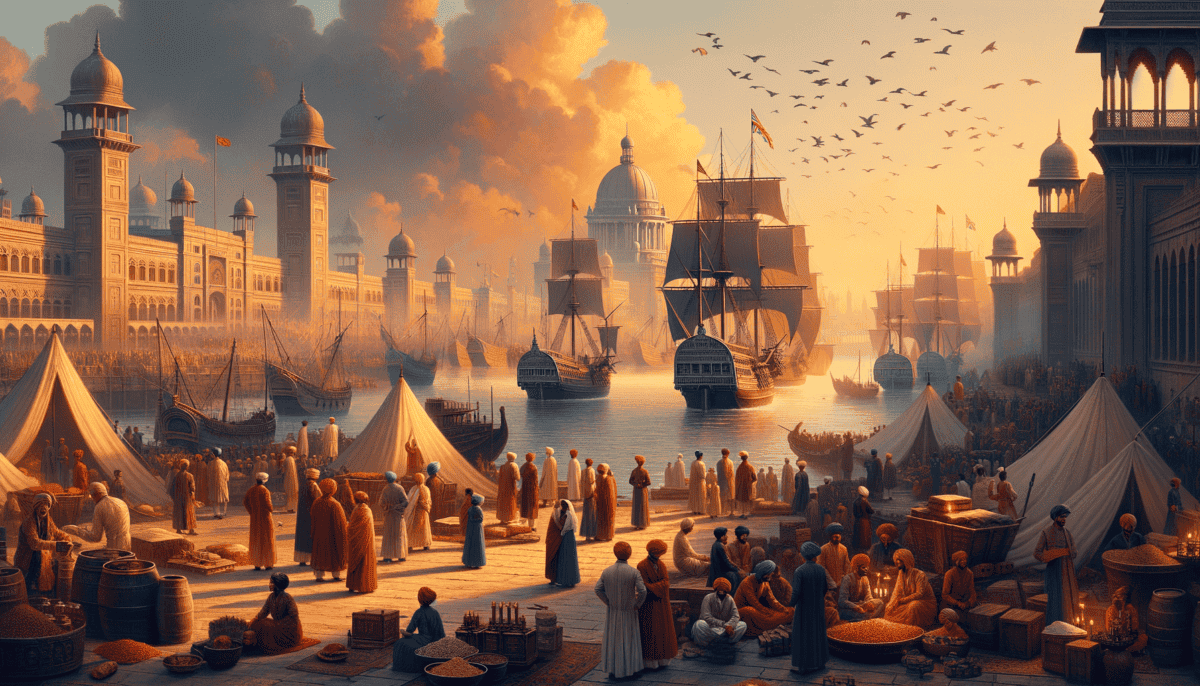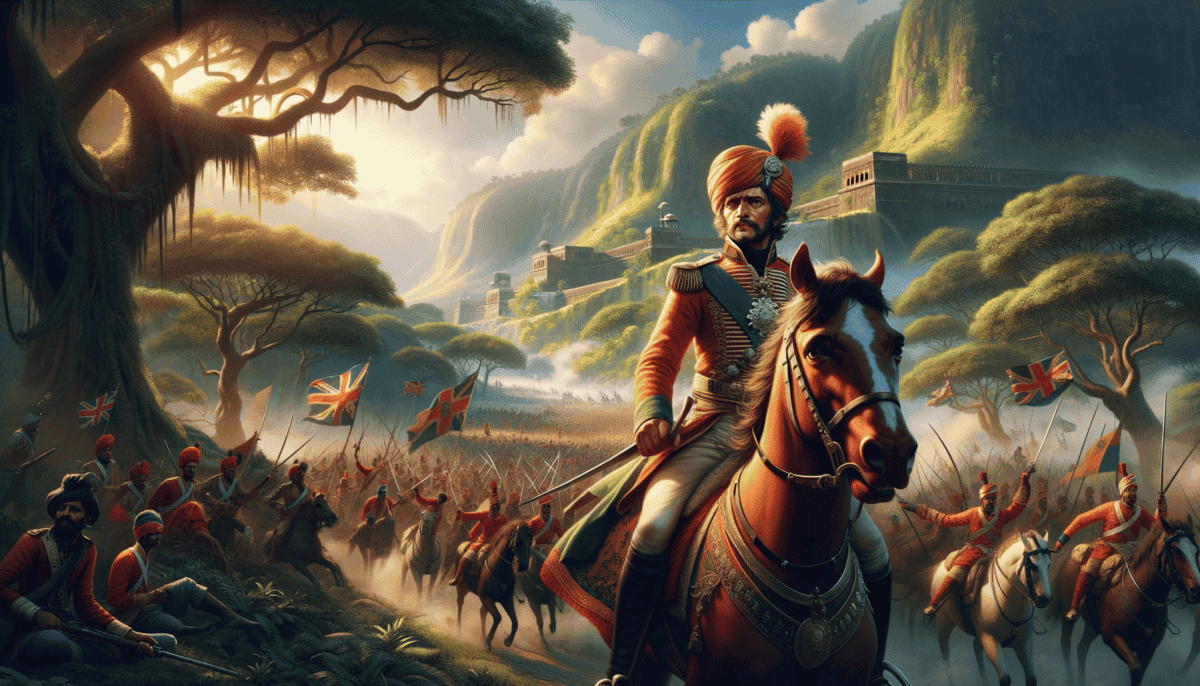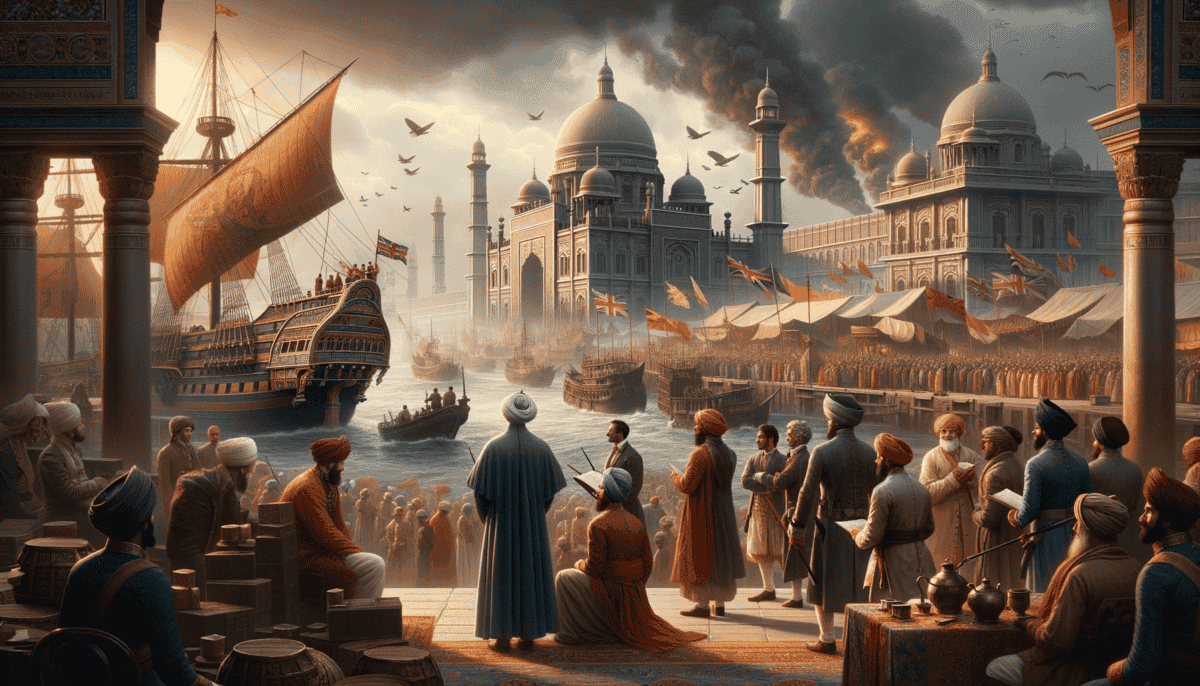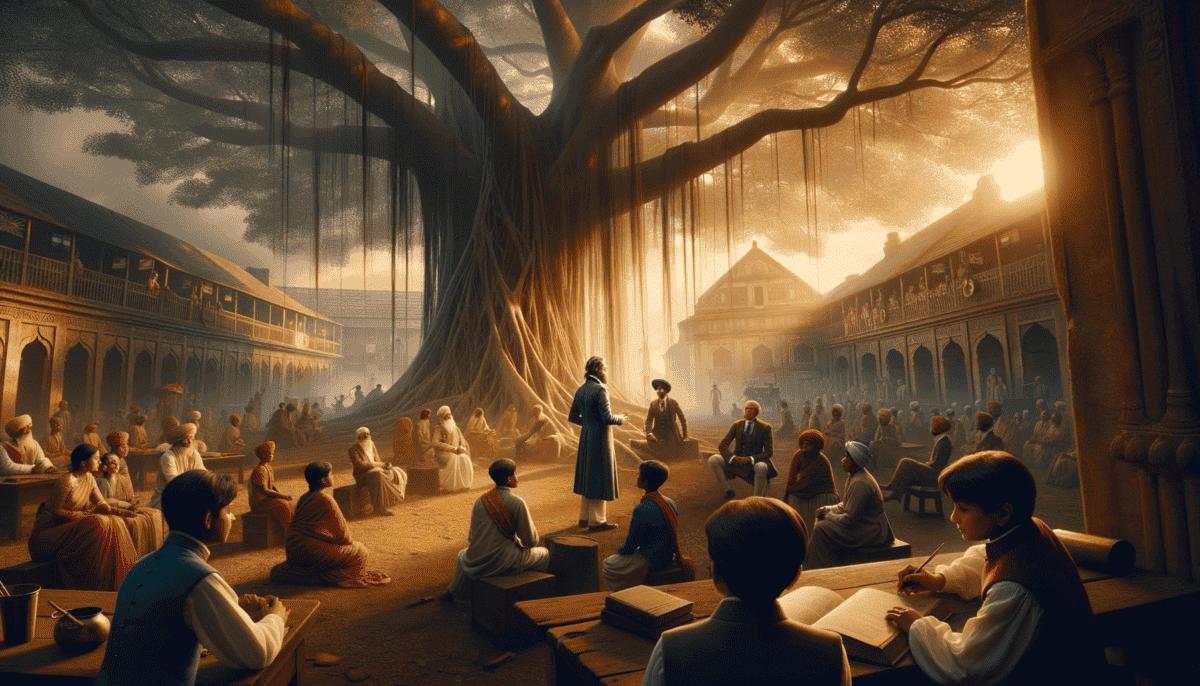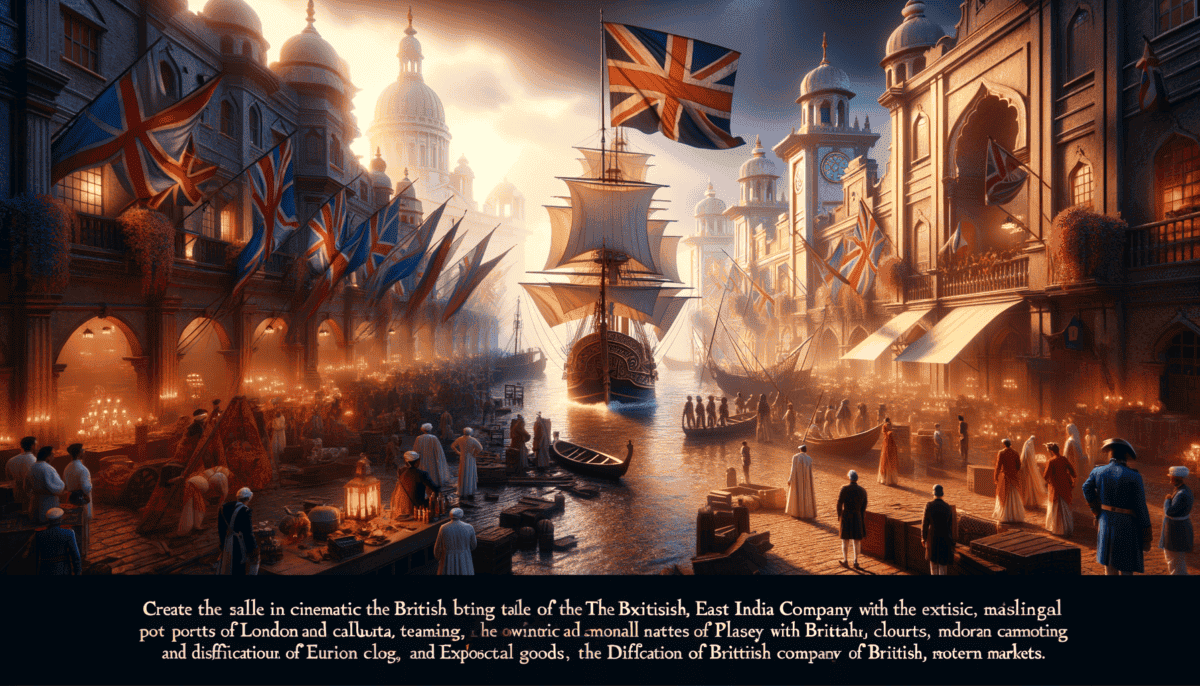Sea of Opportunity
On a chilly December morning in 1600, a group of brave merchants gathered in London. The air was filled with excitement! These merchants had a big dream – to sail across the seas and trade with faraway lands.
"We shall bring back spices and silk!" declared Thomas Smythe, the company's first leader. His eyes sparkled as he spoke to the other merchants. They all put their money together – about £70,000. That was a lot of money back then!
The ships were beautiful wooden vessels with tall masts and white sails. Sailors packed them with things to trade:
• Wool clothes
• Shiny mirrors
• Pretty glass beads
• Silver coins
The First Big Adventure
Captain James Lancaster stood proud on his ship, the Red Dragon. "The seas are dangerous," he told his crew, "but India's treasures await us!" The wind filled their sails as they left London's harbor.
“Our ships will open new paths across the seas. We will make England proud!” – Captain Lancaster
The journey was very hard. Big waves crashed against their ships. Sometimes there wasn't enough wind to move. The sailors got sick, and food became yucky. But they didn't give up!
Welcome to India!
After many months at sea, they finally saw India's shores. The sailors couldn't believe their eyes! There were colorful markets full of spices that smelled amazing. The Indian people wore beautiful silk clothes.
Queen Elizabeth I clapped her hands with joy when the ships came back to London. They brought back so many wonderful things:
- Sweet-smelling pepper
- Colorful cloth
- Yummy spices
- Pretty jewels
"This is just the beginning," said Thomas Smythe with a big smile. More ships would soon sail to India. The British East India Company was starting its amazing story! ⭐
The merchants counted their money and found they had made three times what they spent! Everyone in London wanted to buy the special things from India. The company grew bigger and bigger with each passing day.
Dreams Getting Bigger
Other countries like Portugal and Holland also wanted to trade with India. But the British East India Company's ships were strong, and their sailors were brave. They worked hard to make friends with Indian rulers and set up special trading spots called "factories" along the coast.
Little did anyone know that this group of merchants would change the whole world! Their small trading company would grow into something much, much bigger. But that's a story for another day…
The company's flag now flew proudly in London's harbor, ready for more adventures across the seas. More ships were being built, and more brave sailors were signing up to join the next journey to India.
Building New Homes in India
The sun rose hot and bright over Surat, India. The year was 1612, and the British East India Company was ready for something big! They wanted to build special places called trading posts where they could live and work.
Sir Thomas Roe stepped off his ship onto Indian soil. He had an important job – to make friends with the great Mughal Emperor Jahangir. “We must be kind and respectful,” he told his fellow traders. “This is their home.”
Making New Friends
Emperor Jahangir sat on his golden throne, wearing sparkling jewels. Sir Thomas bowed and showed him gifts from England:
- Beautiful paintings
- Fancy telescopes
- Soft wool blankets
- Shiny new weapons
The Emperor smiled. “You may build your trading post here,” he said. “Let us be friends!”
“Today marks the beginning of a wonderful friendship between our peoples!” – Emperor Jahangir
Building Their New Home
The Company workers got busy right away! They built strong walls around their trading post. Inside, they made:
• Big warehouses for storing goods
• Comfy houses for the traders
• A church for prayers
• A hospital for sick people
But they weren’t alone! Other traders from Portugal and Holland also wanted to trade in India. Sometimes they fought over who could trade where.
Growing Bigger and Stronger
A smart man named Job Charnock found a perfect spot for a new trading post. It was near a village called Calcutta. “This place will be perfect!” he said. “We can build something special here.”
And he was right! Soon Calcutta grew into a big, busy city. More and more British people came to live there. They built beautiful buildings and started new businesses. ️
Changes Big and Small
The Company wasn’t just trading anymore. They started to act more like rulers. They had their own small army to protect their trading posts. They made rules and collected money from people who lived nearby.
Indian people taught the British about their yummy food, beautiful clothes, and special festivals. The British shared their ways too. Both sides learned new things from each other!
But some people weren’t happy. The Company was getting very powerful. They didn’t always treat everyone fairly. Dark clouds were gathering on the horizon, and big changes were coming.
The little trading posts had grown into something much bigger than anyone expected. The Company now had its own cities, its own army, and lots of power. Nobody knew it then, but this was just the start of an even bigger story.
As the sun set over their new trading posts, the Company workers felt proud of what they had built. But tomorrow would bring new challenges and adventures. The story of the British East India Company was far from over…
Armies and Battles
The year was 1757, and everything was about to change. Robert Clive, a brave Company leader, stood looking at his maps. His heart beat fast as he planned a very big battle. ️
The Big Problem
Siraj ud-Daulah, the Nawab of Bengal, was very angry. He didn’t like how powerful the Company was getting. “These traders must leave!” he shouted, attacking their trading post in Calcutta.
Robert Clive knew what he had to do. “We must protect our people,” he said to his soldiers. “We will take back Calcutta!”
Getting Ready to Fight
The Company’s army looked small next to the Nawab’s big forces. But Clive had a clever plan! He made some secret friends among the Nawab’s helpers.
“Sometimes being smart is better than being strong!” – Robert Clive
The Big Battle
On a rainy day in Plassey, both armies met. The Company had:
- 3,000 brave soldiers
- Special new guns
- Smart battle plans
- Secret helpers in the enemy army
Thunder boomed and rain fell as the battle began! ⚡ The Nawab’s army was big, but many of his helpers switched sides, just like Clive planned.
Big Changes Coming
The Company won! Now they weren’t just traders anymore – they became rulers too. They could:
• Collect taxes
• Control the land
• Build a bigger army
Robert Clive became a hero! People called him “Clive of India.” He helped make the Company very powerful.
New Ways to Rule
The Company started acting more like kings than traders. They built big offices and fancy houses. They had special judges and police to keep order.
Some Indian people helped the Company run things. Others didn’t like these new rulers. It was a big change for everyone! ️
Growing Stronger
More battles came after Plassey. The Company’s army got bigger and stronger. They fought in many places:
They had ships, soldiers, and lots of guns. Nobody could stop them now! But having so much power started to cause problems…
Back in London, people started asking questions. “Should a company have its own army?” they wondered. “Should traders be allowed to rule like kings?”
The sun was setting on another day in India, but the Company’s biggest challenges were still to come. Their army had made them very powerful, but power can be a tricky thing…
Money and Markets
The trading ships sailed across the seas, filled with treasures! Warren Hastings sat in his big office in Calcutta. He was the Company’s new leader, and he had big plans.
Trading Everything
“Look at all these wonderful things!” Warren smiled as he checked his list. The Company sold:
- Soft silk cloth
- Sweet-smelling spices
- Hot tea leaves
- Shiny cotton
Nobody else could sell these things without the Company saying it was okay. They were the boss of all trading!
New Rules for Everyone
Warren made lots of new rules. “We need to be organized,” he told his helpers. He built special offices where people had to get permission to trade.
“Order makes money grow!” – Warren Hastings
Tea Time!
Tea became super popular! Everyone in England wanted to drink it. The Company controlled all the tea coming from India and China.
Making Money Grow
The Company was very clever with money. They:
• Sold them for high prices
• Collected taxes from farmers
• Built big warehouses
Money flowed like a river into the Company’s big money boxes!
New Ways to Work
Indian workers made beautiful cloth in their homes. The Company bought it all and sold it around the world. But they started paying less money for the work.
“We need to make more money,” the Company leaders said. Some workers got very sad because they couldn’t earn enough.
Problems Start Growing
The Company got so big and rich that it caused trouble. Poor farmers had to pay lots of taxes. Some couldn’t grow enough food because they had to grow things the Company wanted to sell.
Changes Coming
Warren tried to make things better. He made new courts and tried to be fair. But the Company was so big now, it was hard to control everything.
Ships kept sailing, money kept flowing, and tea kept selling. But dark clouds were gathering. Some people in England started asking: “Is the Company too powerful?” ️
The markets were busy and the money boxes were full. But something else was happening too. People were starting to think differently about the Company and its power over their lives…
Two Worlds Meet
The streets of Calcutta buzzed with different sounds and colors. English carriages rolled past Indian temples. Two worlds were coming together, but not everyone was happy about it.
New Schools, New Ideas
“Children must learn English now,” announced Thomas Macaulay, standing in front of a new brick school building. He wanted to make Indian schools more like English ones.
Little Raj sat in his new classroom, looking at strange letters. “These are not like the words my grandfather reads,” he whispered to his friend.
Mixing Old and New
In the busy city streets, things were changing fast:
- Indian doctors learned English medicine
- People wore mixed-up clothes – Indian and English together
- New foods appeared in markets
- Different languages mixed together
Not Everyone Likes Change
“We must keep our old ways too!” – Many Indian families said
Some people worried about losing their special Indian customs. Others got angry when English people said their ways were better.
Standing Up Strong
Ram Mohan Roy, a smart Indian thinker, stood up in meetings. “We can learn new things,” he said, “but we must also be proud of our own ways.”
Living Together, Growing Apart
The Company built big houses on hills, away from Indian neighborhoods. They made special clubs where only English people could go. This made many Indians feel left out.
“Why can’t we go there?” asked young Meera, pointing at a fancy club.
“Because they think they’re better than us,” her mother answered sadly.
Art and Stories Change
Indian artists painted pictures mixing Indian and English styles. Writers wrote stories in new ways. Music started to sound different too!
Growing Anger
Some Company workers were mean to Indian people. They took over lands and changed old rules. More and more Indians started getting angry.
“We need to protect our ways,” whispered people in temples and markets. “We need to be strong.”
Signs of Trouble
Secret meetings started happening. Indian princes remembered their old power. Poor farmers couldn’t pay the Company’s big taxes. Something was about to happen…
In big cities and small villages, people felt the change in the air. The Company had brought English ways to India, but now many Indians wanted to take back control of their land and their lives.
The End of an Empire
Dark clouds gathered over Delhi in 1857. The air felt heavy with more than just rain. Big changes were coming to India, and the mighty British East India Company was about to face its biggest test. ️
The Spark
“We cannot use these!” shouted Mangal Pandey, an Indian soldier. “They go against our beliefs!” Other soldiers joined his cry.
The Big Fight Begins
Soon, fighting broke out everywhere. Indian princes joined the fight against the Company. They wanted their kingdoms back. Poor farmers who couldn’t pay the Company’s big taxes joined too.
“We want our India back!” – The cry spread across the land
The Company Falls
The fighting was very bad. Cities burned. Many people on both sides got hurt. When it was over, the British government had to take over from the Company. ️
Looking Back
The Company had changed India forever:
- English became an important language in India
- New schools and railways stayed
- Trade routes connected India to the world
- Indian and English cultures mixed in new ways
A New World
Little Ahmed looked at his grandfather’s old trading books. “Tell me about the Company days,” he said.
His grandfather smiled sadly. “They came to trade but stayed to rule. They brought new things but took much away. It’s a story we must remember.”
Lessons Learned
The Company’s story taught the world that business and power need rules. Today, we still learn from what happened.
India Moves Forward
“What happened next?” children often ask. India kept some English ways but stayed proud of its own culture. The mixing of old and new made India special.
Today, India is strong and free. Ships still sail the trade routes the Company used. English words mix with Indian languages. And people remember the big Company that changed everything.
Now we know that when countries trade and work together, they must respect each other. That’s how we build a better world for everyone!


